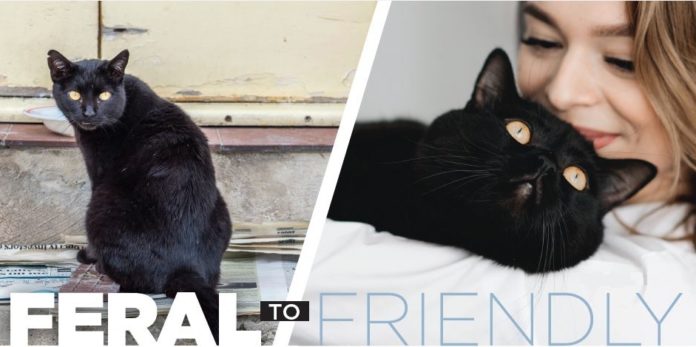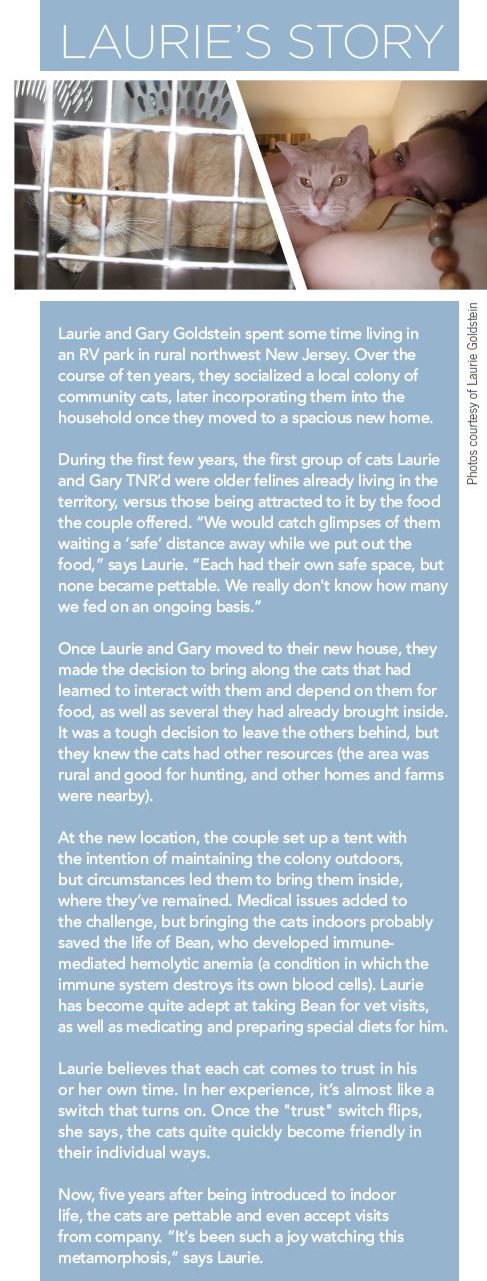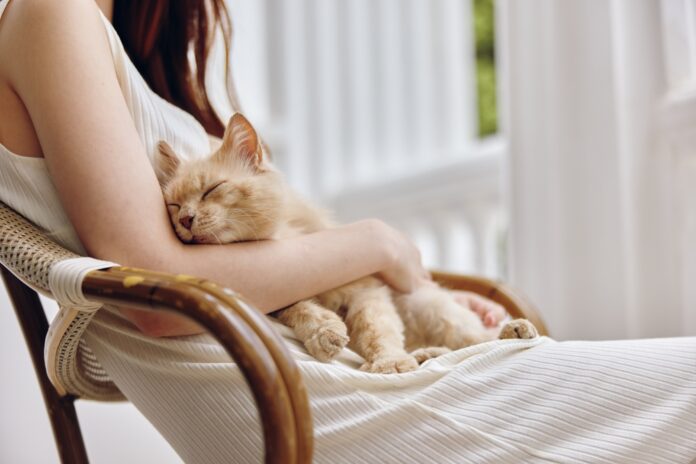Feral to friendly – transitioning a cat to life with humans

Can feral cats be socialized and transformed into household companions? It can be done in many cases, but it requires patience and commitment.
Is it possible to turn a feral or community cat who has always lived outdoors into a household pet? The answer is frequently yes, but it takes a lot of time and patience. Often, these cats have grown up with no to minimal human contact, and/or are afraid of people because of bad experiences with those who don’t want them around. People who work with feral cats know that socializing these kitties is a process. Let’s learn a bit about this process and how you might encourage a feral cat in your neighborhood to become your friend.
Feral behavior varies
Many of these cats display various degrees of feral behavior. Some are totally wild, having no human contact or only negative human contact. Some are semi-feral, having experienced some positive human contact. Abandoned housecats may also become semi-feral.
Feral and community cats that are transitioned into homes often come from managed colonies or have been hanging around a home and have some human contact. They may keep their distance, but they recognize their caregivers and interact with them. Kittens are more easily adoptable and can be socialized relatively quickly, even if they are born to feral moms. Other circumstances may also bring a feral cat indoors – for example, she might be injured and in need of care, or has just had a litter of kittens.
 Some feral cats may be unadoptable. In managed colonies, these cats are TNR’d (trapped, spayed/neutered, then returned to the colony), where their numbers hopefully diminish over the years.
Some feral cats may be unadoptable. In managed colonies, these cats are TNR’d (trapped, spayed/neutered, then returned to the colony), where their numbers hopefully diminish over the years.
Six steps to making friends with a stray
1. The first step is to have a comfortable, secure room prepared in advance. There should be plenty of cozy hiding spaces in the room – tunnels, boxes and perches – to allow the kitty to decompress, along with food and water bowels and a litter box. Add a comfortable chair for yourself, to allow the cat to get used to your “in home” presence. Also consider a plug-in pheromone diffuser.
2. A humane trap is the safest way to capture and transport a feral cat; cover the trap with a blanket once she’s inside.
3. The cat can be released once she’s in the “safe room” – open the door of the trap and leave her alone with her food and water to allow her to decompress.
4. The time it takes to socialize the cat can vary widely, depending on the cat. However, it’s important to be patient, and let her determine the level of interaction. Enter the room quietly and spend some time reading and speaking softly to her. Watch her body language and try to engage her in play with a fishing pole toy or feather toy. Make eye contact via the slow blink – staring directly at her may be seen as a threat. Once the cat seems relaxed, try offering her a brush, which may be less threatening than a hand. Once she’s comfortable with the brush, extend her a finger to sniff. Confine your initial pets to her cheeks and the top of her head.
5. Remember that each cat moves at her own pace. Laurie Goldstein (see sidebar) says it’s all about building trust, and adds that feral and community cats learn from interacting with friendly cats. With this in mind, consider introducing a friendly cat already living in the household. Do this slowly and carefully, however, keeping in mind that your existing cat will also take time to adjust to the newcomer.
6. Once the kitty is comfortable, leave the door ajar and allow her to explore the house in short stints, always giving her the option to return to her safe zone.
Bringing a feral or community cat into your home involves committing to a gradual socialization process. And it’s important to understand that there’s no guarantee you’ll end up with a cuddly lap cat. However, those who have the patience to go through the process find it incredibly rewarding.




